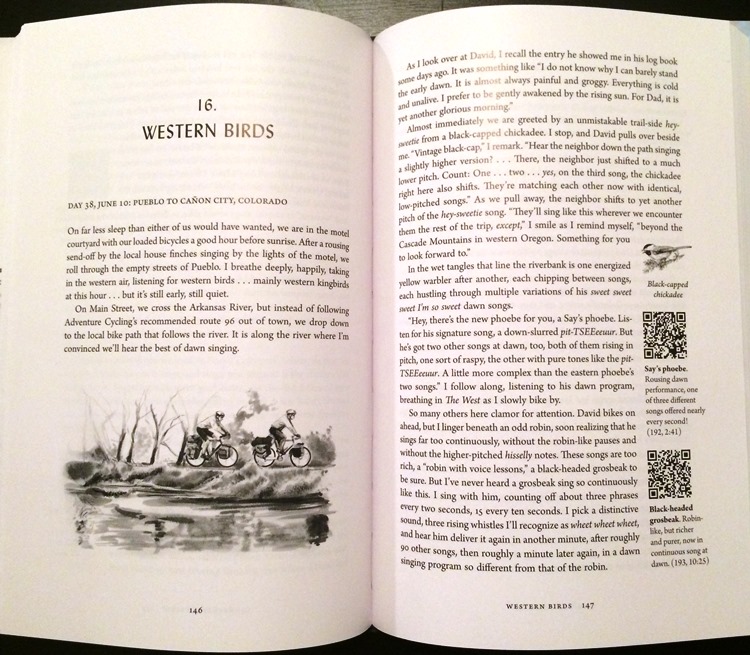
The loss of jobs in a high-technology society—and, more than that, the downgrading of skills required and therefore of the wages paid for many of the jobs that remain—are likely to be the primary economic and social challenges facing the United States over the coming generation. The question is not whether millions of would-be workers will be chronically out of work. Unless an outsized legal minimum wage suppresses the availability of entry-level jobs, most Americans will find something to do. But far too many of the jobs they will end up taking will pay them too little to support what our society considers a middle-class standard of living.
The widely touted prospect of driverless vehicles is just one example, but it is illustrative. A half-century ago, the leading opportunity for Americans without a college education to earn a middle-class income, with health and other benefits, was working on a factory floor. But there are many fewer such jobs in the US today—only 8 percent of the country’s labor force works in manufacturing—and fewer still for employees without advanced technical training. In most areas of the country, the best opportunity for these workers is now driving a truck.
Only convinced futurists envision FedEx and UPS vans racing around the nation’s cities anytime soon with no human inside. But in the future, what will the human on board be doing? Most likely, not driving the van but running packages up to people’s doorsteps and then pushing a picture icon on a touch screen to confirm that deliveries have been completed—not so different from what the cashier at a McDonald’s now does. For just this reason, the wages those no-longer-drivers receive also won’t be much different from McDonald’s wages.
Driverless trucks are still some distance in the future, but the reduction of the skills required in the workplace as a result of new technology is already a reality for millions of workers beyond McDonald’s. Today more than 15 million Americans work in some form of retail trade. But apart from the most upscale stores, the job is not what it used to be. Since the introduction of barcode scanners (beginning in the 1970s), most retail sales clerks no longer need to know the store’s inventory, look up prices, keep track of what’s sold in order to facilitate reordering, or even make change in a cash transaction. The job now mostly consists of swiping objects past a scanner and letting a “smart” cash register do the rest.
A similar process is underway in retail-level investing and financial planning. Instead of talking with a broker, many Americans now execute stock trades themselves via E-Trade, and automated “robo-advising” is beginning to take over the more complicated job of helping investors allocate their funds among different asset classes. Even the venerable BlackRock, the world’s largest money manager, has been acquiring smaller firms that rely on computer algorithms rather than investment professionals to manage their clients’ funds. Increasingly, jobs in retail investing are becoming divided between high-end professionals who provide sophisticated advice and services to investors with large portfolios and get paid accordingly, and people who do routine follow-up work for smaller accounts and earn very little. Moreover, that follow-up work can be done from Bangalore just as easily as from Boston or New York or Chicago, and it often is.
The relentless advance of robotics and other applications of artificial intelligence in the workplace is reducing the skill level required for a wide range of other jobs as well. With a GPS, drivers for ride-sharing services no longer need to know a city’s streets. In many warehouses today, computers manage the workers, displaying on a screen which items to retrieve and where to put them. The humans’ main advantage is the greater flexibility of their hands.
Like the Luddites in Britain’s cotton industry two hundred years ago, these workers’ problem will not be no job but rather a no-skill job, one that requires little of them and therefore pays them little in return. For the Luddites, the threat was a new, technologically improved loom that required less skill to operate. With their expertise suddenly redundant, the weavers saw their wages drop accordingly. Woody Allen famously quipped that 80 percent of life is showing up. Most Americans’ jobs today require a lot more than just showing up, and what they earn is well above the raw value of their presence. When work becomes mostly just showing up, the wage will reflect it.
The Luddites’ fears of permanently lower wages were proven wrong, but not because their campaign to smash up the new looms succeeded. They were wrong because, over time, advancing technology did more than just eliminate human labor and enable unskilled workers to replace skilled ones. It also devised new ways to accomplish age-old objectives. Railroads, then cars and trucks powered by the internal combustion engine, and in time airplanes replaced horse-powered ways of moving both people and goods.
New technologies also introduced new goods that many people then wanted, and therefore that workers got to produce: from radios to televisions, from computers to cell phones, from electric lighting to electric shavers and even electric toothbrushes. Making those new goods, as well as operating and servicing them, required more skill than what the Luddite weavers had. And the wages for those jobs were higher as well.
Over time some version of this process will presumably play out again. Technological change triggers two countervailing processes in the labor market: automating tasks previously performed by labor, and creating complex new tasks for which labor is especially well suited and perhaps absolutely necessary.1 Both are easily visible in today’s economy. For example, with ATMs and computerized screening of mortgage applications, retail banking requires many fewer employees than before; but those that remain are mostly performing more sophisticated tasks. What matters for the kind of work people do, as well as for the wages they earn, is the balance between the two opposing processes.
For now, automation is proceeding rapidly, but most new jobs do not involve complex labor-intensive tasks that would warrant above-average pay. As a result, wages are stagnant despite a strong increase in employment (15 million net new jobs created thus far in this decade), and the competition for jobs that require specialized skills gets fiercer each year. Legions of would-be lawyers, beauticians, and computer programmers can’t find work in the fields for which they’ve trained and struggle to pay off the loans they took out to pay for their training. The one job that everyone believes will multiply in the years ahead is nursing home attendant.
If the United States occupied some planet of its own, even the nursing home aides would eventually earn higher wages, in effect sharing in the productivity gains that occur elsewhere in the economy. The wages for nursing home jobs would have to rise, along with wages in other industries, or nobody would take them. But in the US an unending stream of new immigrants is willing to take such unskilled jobs. (Although President Trump portrays his efforts to halt that flow as a boon to America’s skilled factory workers, in fact those most likely to benefit are unskilled workers who would then face less competition for jobs in elder care, lawn and tree trimming, house painting, and a variety of similar pursuits.) At the same time, there is an effectively infinite supply of offshore labor to take up both skilled and unskilled work that needn’t be done locally—ranging from call center operators to computer programmers to corporate auditors.
As a result, the nation’s labor market continues to bifurcate, separating the workers lucky enough to get the high-skill jobs our economy has newly created (and get paid accordingly) from those stuck with jobs for which automation has taken away the need for skills and that therefore pay very little.
What to do in the face of this challenge is fast becoming the central economic policy question of our time. Simply letting the market operate means consigning ever more Americans to deskilled jobs, at low wages, whether or not they are capable of skilled work. We would be on our way back to what the English economist James Meade, half a century ago, described as “an immiserized proletariat of butlers, footmen, kitchen maids, and other hangers-on.”3 More education and training, to prepare more people for the complex tasks required by our new technology, will surely help. But it will succeed only to the extent that the specialized training matches the needs of the technology.
A different strategy, which has drawn support especially outside the United States, is not to remedy the situation but to make it less economically painful through some kind of income transfer program. The one now attracting the most attention—perhaps because of the growing realization of how much of the labor force in advanced economies will likely find their jobs increasingly threatened by new technology—is to provide income transfers not just to those in need (as defined by some societal standard) but to everyone.
Within the past year Finland introduced a “basic income” on a highly limited, experimental basis (only two thousand participants, in a population of 5.5 million), and the idea is gaining some support in other countries too. Last year Switzerland held a nonbinding national referendum on such a proposal (it lost, with 77 percent voting against), and groups in other European countries, as well as South Africa, have endorsed the idea. Some in the US have expressed interest as well. Facebook founder Mark Zuckerberg advocated a “universal basic income” in the commencement address he gave at Harvard this past spring. Many of the alumni present took his doing so to signal his ambition to follow another billionaire businessman into electoral politics.
Now, in Basic Income: A Radical Proposal for a Free Society and a Sane Economy, Philippe Van Parijs, an economist and ethicist, and Yannick Vanderborght, a political scientist—both Belgians—have laid out at some length a comprehensive case for a universal basic income. Although the adjective “universal” is missing from the title of their book, that aspect of the proposal is essential to their argument. Especially in America, unemployment benefits, food stamps, free school lunches, and subsidized housing all come with some stigma attached. By contrast, Social Security and Medicare, available to all citizens who reach a certain age (currently sixty-six for Social Security and sixty-five for Medicare), do not. Nor does free public schooling, available to all children. Van Parijs and Vanderborght would, in effect, expand Social Security payments to everyone, including children, with the per-person payment independent of any prior contributions or earnings.
As the subtitle of their book suggests, their underlying argument is not just economic but philosophical. At the economic level, Van Parijs and Vanderborght explain the familiar problem of discouraging work that is inherent in many existing welfare programs. People who have no job and live on various kinds of government benefits lose that support once they go to work and their incomes rise. At the same time, what they earn, above some minimal level, is subject to tax. In many cases the implicit tax represented by the loss of benefits and the explicit tax on earnings from the prospective job, taken together, subject a person deciding whether to go off benefits and take a paying job to an effective tax rate well above what top-bracket earners pay. The result is a disincentive to work. Welfare eligibility requirements often create further distortions, like disincentives to marry (a single mother may get more benefits), or incentives to have more children (benefits may be based on the number of children).
Economists and others have struggled to devise ways to modify the tax code and many welfare programs to blunt these perverse effects. But even with carefully designed eligibility requirements and provisions like the US earned income tax credit, the problem is inescapable. A universal benefit, paid to everyone, whether working or not, regardless of income or age or marital status, would avoid many of these distortions.
The more novel argument the book advances is that a universal basic income would provide a new kind of economic freedom. Most obviously, anyone would be free not to work. Van Parijs and Vanderborght mostly envision people taking advantage of this option for family reasons, or to acquire further education and training, or to take low-paid (or even unpaid) internships. But they acknowledge that some people would simply choose not to work, relying on their no-questions-asked guaranteed income to support themselves. In the authors’ view, a crucial feature of the program is that the income is “unconditional in the sense of being obligation free, and not being subjected to a willingness-to-work test. The voluntarily unemployed are no less entitled to it than the employed and the involuntarily unemployed.”

The authors see this central feature of universal basic income as a form of empowerment for “those who currently have least,” maximizing their “power to consume” as well as their “power to choose the sorts of lives they want to live.” In effect, Van Parijs and Vanderborght turn the usual libertarian argument on its head. Many conceptions of society based on individual freedoms and equal treatment of all citizens have a certain appeal in principle, but in practice work to the advantage of those in society who command the greatest economic resources. (Anatole France archly noted that “in its majestic equality, the law forbids the rich as well as the poor to sleep under bridges.”) The disincentive to work is normally a large part of the argument against both welfare programs and the taxes that pay for them. In contrast, for Van Parijs and Vanderborght the attraction of a universal basic income is not only that it eliminates distortions to people’s individual economic decisions but also that it “boosts as much as is sustainable the market power of those with the least market power, and thereby…their ability to resist subjugation to bosses, partners, or bureaucrats.”
This expanded freedom would do more than just reduce work, however. Van Parijs and Vanderborght also argue that with a no-conditions income many people would take advantage of the opportunity to pursue employment that they find fulfilling but that offers little economic reward, or even none at all. In some cases, not just these individuals but society at large would benefit. More people with energy and talent would feel free to take low-paid jobs, or simply volunteer, as schoolteachers or social workers or museum guides. More aspiring entrepreneurs would be free to start businesses, more would-be inventors could stay home in their basement workshops, and more would-be novelists and poets and playwrights could explore their creative potential. Maybe the economy would reward them, but even if not, they would all have the fulfillment of trying, and overall innovation and creativity would increase.
Although the authors do not emphasize the connection—they would favor a universal basic income under practically any economic circumstances—the potential appeal of such a program is all the greater in a world of long-term unemployment and reduction of skilled work resulting from advancing technology. If there are not enough decent jobs available, people could choose not to work without having to suffer privation. (Even the definition of employment would become fuzzy: Is a full-time writer who never succeeds in selling any of his novels “employed”?) And for those who take the many jobs in which technology has reduced the need for skills, at least they could then afford a living standard above what their wage alone would sustain. Either way, the goal “is not just to soothe misery but to liberate us all.”
Especially in America, one immediate objection to any proposal for a universal basic income comes from just this feature, which Van Parijs and Vanderborght see as its foremost attraction: the freedom it would provide either not to work at all or to apply one’s effort along lines that the economy does not reward. Attaching religious value to work as one’s “calling,” even when that activity has nothing directly to do with religion, dates back to Luther and Calvin. (It is no mere turn of phrase when the authors write of “desacralizing paid work.”) Four hundred years later, Franklin D. Roosevelt was appealing to deeply rooted American values when he referred, in his first inaugural address, to the “moral stimulation of work.”
Today the moral value of work remains a bedrock of most Americans’ thinking. And while there is debate over how well the economy’s wage structure reflects society’s priorities—and even if it does, whether those priorities are well placed—most Americans draw a distinction between working and merely indulging in some hobby. Van Parijs and Vanderborght’s paean to the freedom not to work, and to some extent also the freedom to decide for oneself what constitutes worthwhile work, has less affinity with American values than with European ones.
A more practical difficulty, which the authors recognize but do not resolve, turns on how to treat children, and even spouses. If the payment is genuinely universal, “paid to each individual, and at a level independent of that individual’s household situation,” a family of four would receive four times what a single individual would get. Four times the amount that would adequately support one person living alone seems unnecessarily generous for the family, while one fourth of what the family could live on would fall well short of a lone individual’s need. The per-person payment that Van Parijs and Vanderborght tentatively target—one fourth of a country’s per capita income, or for Americans today just under $15,000 annually—seems intended to steer in the middle of this dilemma, but it satisfies neither side.
Moreover, distortions of the kind familiar from existing welfare programs would arise as well. A nonworking couple could increase their family income from $30,000 to $90,000 by having four children. Historically, many countries have actually sought to create this incentive, using “natalist” policies like per-child bonuses and subsidies to encourage a higher birth rate. Few people would advocate such a policy for the US today. Instead, interest in a “universal child allowance” mostly reflects a desire to alleviate child poverty and to remove the welfare stigma for low-income families.
A more powerful concern, for Europeans no less than Americans, is whether a universal basic income is affordable. Van Parijs and Vanderborght’s discussion of the cost of any such scheme is cogent and detailed. Finland’s experiment, with 2,000 participants receiving €560 per month, costs only $15 million per year. Van Parijs and Vanderborght’s target of $15,000 a year for every American would cost $4.8 trillion—far more than today’s budget for the entire federal government.
The authors conclude that at least for now, and probably for some substantial time to come, cost at this level is too great to make a universal income program feasible, either in the US or elsewhere. (By contrast, in the poorest countries, a universal basic income, at an affordable level, might well help eradicate extreme poverty.)4 They therefore recommend a much more modest payment, well below what would be necessary to enable a family, or even more so an individual living alone, to survive. (They note that “a basic income is not by definition sufficient to cover what could be regarded as basic needs.”) Their hope would then be to expand the program by steps, as society’s ability and willingness to pay for it increase, until it eventually reached full scale.
Here, however, the argument runs into multiple contradictions. To begin, Van Parijs and Vanderborght repeatedly make the familiar point that a universal basic income would not cost as much as it might seem because once it is in place, existing welfare programs would be unnecessary. The net cost would then be the amount of the per-person payment times the country’s total population, minus the current cost of all welfare programs, including the support those programs provide as well as the cost of the bureaucracy needed to run them.
But the authors also acknowledge that with the more modest payment they recommend for now, welfare programs would have to remain in place. The cost of the universal basic income would then be simply the total cost of sending a payment to everyone, whether needy or not. Hence the attempt to make the scheme affordable, given the existing limitations, ends up reinforcing its unaffordability by removing what the authors hold out as a major source of available funding.
Moreover, if existing welfare programs continue, with all their distortions and associated stigma (especially in America), two of the authors’ main objectives would be unfulfilled. In contrast to Calvin, who wrote that “adversity is a sign of God’s absence, prosperity of his presence,” Van Parijs and Vanderborght believe that most of today’s needy citizens are poor for reasons that are not their own fault, much less the result of divine disfavor. But if the existing welfare programs remain, so too will the stigma and the perverse incentives that come with them.
Even the most fundamental element of the authors’ argument—the association of a universal basic income with “the genuine capacity to do whatever one might wish to do”—falls away if the per-person payment is too small to provide meaningful support. No doubt a few thousand dollars a year would enable some people to take lower-paying jobs than they could otherwise. But this could be achieved with the help of any of a variety of existing proposals, such as wage supplements for new high school graduates or subsidized apprenticeships.
Evaluating the relative merits of those proposals, perhaps with a universal basic income added to the list, is surely worthwhile. But it seems unlikely that paying out money to everyone, not just new graduates and apprentices, and whether working or not, will end up being the best way to serve these ends. Presumably for just this reason even Finland’s much-touted basic income experiment is not actually “universal”; only people out of a job and already drawing unemployment benefits (which the basic income payment replaced) were eligible. The same concern applies to proposals for a universal child allowance. It is far from clear that paying out money to middle- and even high-income families is the most effective way to address America’s shamefully high rate of child poverty.
More important, a modest annual payment will not fulfill the authors’ grander, “emancipatory” aims. The novel argument they make for a universal basic income rests on its creating a more inclusive society and providing “the real freedom to flourish, through work and outside of work,” whether in or outside the market economy. The version of the scheme that they eventually propose will not deliver on these lofty ideals.
Van Parijs and Vanderborght have done the discussion of a universal basic income a great service. They have set forth, clearly and comprehensively, what is probably the best case to be made today for this form of economic and social policy. But to deliver the benefits its supporters hold out for it, the income paid must be substantial—under almost any likely conditions, too great for a society like ours to afford. And implementing it at a smaller level, as the authors recommend, would deliver few of the promised benefits yet still cost enough to present a serious hurdle. For now, a universal basic income remains a utopian vision. We will have to address the challenge of technological unemployment and deskilling in some other way.





















